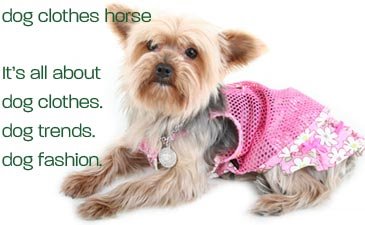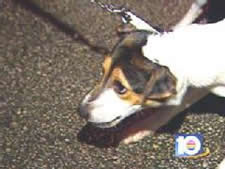 Ever wanted to know a little something more about your dog's (or maybe another dog's) breed? Well here is some info on different dog breeds, ranging from small dogs to large dogs:
Ever wanted to know a little something more about your dog's (or maybe another dog's) breed? Well here is some info on different dog breeds, ranging from small dogs to large dogs:
SMALL BREEDS:
Chihuaha: Chihuahua dogs are perfect for doting adults but not great with kids because of fragility and a tendency to hog the spotlight. That is why they are normally used today as companions. Originally from Mexico, the Chihuahua will ride in your purse or sit on your shoulder but will not, under any circumstances, play second fiddle.
Yorkshire Terrier: The Yorkie may look precious as a porcelain sculpture but these luxuriously satin-coated little dogs can run circles around a squirrel and alert an entire neighborhood when the mail carrier arrives. Originally from England, bright, quick, intelligent and sometimes possessive, Yorkies are easy to spoil and prefer homes without small children.
Boston Terrier: What good manners! The Boston Terrier dog isn’t nicknamed the “American Gentleman” for nothing. Originally from the United States, Boston Terrier's are easy to train, agreeable, happy to play with kids and quiet in the house. Boston Terrier dogs set the standard for ideal house dogs.
Poodle: This diminutive diva of a dog has the uncanny ability to understand human nature, but not just anybody can waltz up and exchange pleasantries. The Toy Poodle dog has standards. Originally from Germany, easily trained and totally devoted to the respectfully worshipful, the Poodle dog breed needs frequent grooming and as much attention as any two-legged family member.
Shih Tzu: If you don’t want to be worshipped, don’t bring home a Shih Tzu dog. This Chinese darling with the luxurious long coat dotes on its family and demands only your total adoration, and a thorough daily combing, in return. Mellow house dogs and loving lap sitters, these portable dogs are among the most adept dog breeds at constant, cuddly companionship.
MEDIUM BREEDS:
American Pit Bull Terrier: This canine product of the American melting pot is a true success story, a bulldog-terrier cross that made its way out of the fighting pits and into the hearts of dog lovers.
Beagle: Did you say food? The nosy and scent-obsessed Beagle dog breed with the velvety ears and freckled muzzle won’t hear a thing you say if it catches a whiff of a tantalizing scent. Chewers and diggers known for baying and barking, Beagle dogs make delightful and clownish family companions but must be protected from their own curiosity with sturdy fences and firmly held leashes. They are originally from England with ancestors possibly from France or Greece.
Bulldog: The brawny, burly Bulldog breed may look tough but this snorting, snuffling, big-shouldered breed is one big hunk of love. Originally from Great Britain, bulldog breed dogs don’t tolerate too much exercise or high temperatures well, but just lounge on the couch with this brawny buddy and you’ll have a friend for life. Be prepared for snoring that can rock the house.
Cocker Spaniel: Gaze into the limpid brown pools that are the Cocker Spaniel’s eyes, and you just might lose your heart forever to this merry, loving little dog breed with the flowing, silky coat and joyful spirit. The smallest of the sporting breeds and devoted, active family members, Cocker Spaniel dogs will cavort after birds or romp with children, their long ears a-flutter, their bobbed tails a-wag. They are originally from the United States.
Siberian Husky: What dreams of the snowy tundra lurk behind those ice-blue eyes? The Siberian Husky dog breed has that look of the wild and will pull a sled, or you on the end of a leash, from here to Alaska if you let him. This wild child’s independence and high energy appeal to dog owners, but Siberian Huskies need more exercise than many people can provide and enough challenges to prevent boredom and wanderlust. Secure that fence well or risk losing this skilled escape artist.
LARGE BREEDS:
Collie: You won’t get away with much if a Collie dog has his eye on you. Possibly from Scotland, Collie's are protective, attentive and always ready to answer your call. Collie dogs may “herd” children and other pets to keep them in line by grabbing a shirt, nipping a heel or physically pushing a wayward child back toward safety. Collies need training and guidance but their natural good judgment makes them reassuring and watchful dogs.
Dalmation: Seeing spots? Don’t worry, it’s just everybody’s favorite spotted dog, the Dalmatian. This large, super-active, friendly and self-confident breed makes a great pal for active families, runners, bicyclists, horseback riders, hikers and of course, fire fighters! Originally from Croatia, Dals love to chase, run, play and run some more. Sedentary pet owners need not apply.
German Shepherd Dog: That eagle eye, dignified posture and formidable intelligence make the German Shepherd Dog among the world’s most trainable and reliable police, military, search-and-rescue and service breeds. Loyal and intuitive, German Shepherd dogs make excellent personal guardians, companions and helpmates, but they aren’t for most beginning dog owners. German Shepherd dogs want respect, and you’ll have to earn theirs.
Golden Retriever: Throw it again! Throw it again! Originally from Scotland, the Golden Retriever dog's joyful enthusiasm keeps it go-go-going all day long. Family friendly, outgoing, super energetic and passionately obedient, this feathery golden beauty with the big smile excels at sports and service work, but specializes in active and devoted companionship.
Rottweiler: The Rottweiler dog's tough-guy image can make a dog owner feel safe, but the self-confident and protective Rottweiler dog breed comes with some pretty major responsibility. Originally from Germany, when well bred, well trained and well socialized, Rottweiler dogs make loyal and friendly family dogs. In the wrong hands, Rottweiler dogs can be overly protective and inappropriately dominant.
Do you want to know more about a particular dog I didn't mention? Go here for more info.
 I know you've all heard this many times before, but considering that today is Halloween, you should be extra attentive to your dog, and you can do so with these safety tips for your pet found on startribune.com. Just because Halloween is filled with tricks and treats, doesn't mean your doggie should be chowing down on those chocolate bars! Keep these tips in mind for your pet this Howl-O-Ween:
I know you've all heard this many times before, but considering that today is Halloween, you should be extra attentive to your dog, and you can do so with these safety tips for your pet found on startribune.com. Just because Halloween is filled with tricks and treats, doesn't mean your doggie should be chowing down on those chocolate bars! Keep these tips in mind for your pet this Howl-O-Ween:










